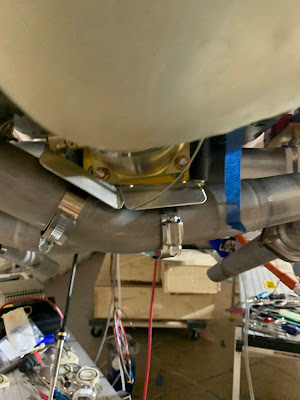RV14 Build May & June 21
Getting the CHT wired in, had to test it lol!
All the CHT are in. I used my heat gun to test that they are wired to the correct cylinder. All good!
We have manifold pressure!
Another 14 was having trouble with fluctuating manifold pressure readings and I read that Garmin recommends using a PS-8G so i went ahead and installed one right at the base of the sensor
After the restrictor I install the elbow and pressure line.
The Oil pressure and Fuel pressure sensors are installed. Just have to trim the zip ties once I commit to this final placement.
View from below of the same sensors.
Routing the CHT wires and securing them
Secuting the #1 CHT and EGT wires.
Keeping the rear EGT wires long enough to reach the front cylinders to help with future troubleshooting.
The EGT holes are already drilled you just have to open them up a little more. The plans have you use a #30 i think, but it wasn't enough to I let the bit wobble in the hole a little to make it slightly bigger. This gave me a nice tight fit for the EGT sensor. The sensor cables are looped to prevent fluids from wicking up the line.
View of the EGT sensor sitting flush on the exhaust.
Right side all wired and routed.
Left side all wired and routed.
Ive never used one, but I started to worry about needing an alternate static source so Im going to install this valve.
The valve really wants to spring open to I purchased a red flip up guard to help keep it closed
The switch is mounted behind the G3X screen on the subpanel.
Man buss with wire protectors.
The automotive wire harnesses are fatter than standard lycoming. I used a reamer to open up the mounting baffle pass throughs.
Tight and snug fit now.
Programming the PMAGS using the EICAD program. For a IO-390 you need to find version 4 to set the timing but use version 3 to read it and make sure it took. There is a glitch in the system for 4 when you use a negative value for advance shift it will display it as 12.6.
My initial settings are to fire at 20BTDC all the time with no advance to help with CHT temps and diagnosis if there is a problem I know its not advanced timing causing it. You can see on this version 4 the advance shift is displayed at 12.6 even though I put it in at -7.
Using the back to the spinner ring gear to set TDC
Line it up with the case.
FWF Avionic wiring 10.0 Hours
Pmag timing 3.0 Hours



























































